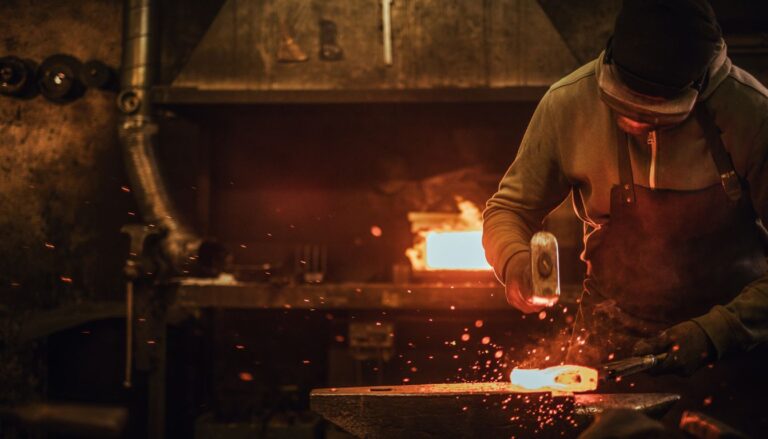Nestled between the Pyrenees Mountains and the Bay of Biscay, the Basque Country has developed one of the world’s most distinctive and celebrated culinary traditions. Basque cuisine, renowned for its emphasis on high-quality ingredients and simple yet sophisticated preparation methods, stands as a testament to the region’s rich cultural heritage and innovative spirit.
The Basque approach to food goes beyond mere sustenance; it’s a fundamental aspect of their cultural identity. From traditional fishing villages to modern urban centers, food plays a central role in Basque social life, family gatherings, and community celebrations. This deep connection to culinary traditions, combined with a willingness to embrace innovation, has helped establish the Basque Country as one of the world’s premier gastronomic destinations.
In this exploration of Basque cuisine, we’ll journey through its historical roots, examine its most iconic dishes, and discover how traditional recipes and modern innovations coexist to create a unique culinary landscape that continues to captivate food lovers from around the globe.
Table of Contents
Historical Evolution of Basque Cooking
The story of Basque cuisine is deeply intertwined with the region’s geography, history, and cultural development. Over centuries, Basque cooking has evolved from simple sustenance to high culinary art, while maintaining its core principles of quality ingredients and respectful preparation.
Early Influences
The foundations of Basque cuisine were laid by:
- Maritime Culture: Access to the Bay of Biscay provided abundant seafood.
- Agricultural Traditions: The region’s fertile valleys supported diverse crops.
- Mountain Herding: The Pyrenees provided excellent conditions for raising livestock.
Traditional Ingredients
Key ingredients that have shaped Basque cuisine include:
- Seafood: Cod, hake, anchovies, and tuna
- Vegetables: Peppers, tomatoes, onions, and beans
- Meats: Beef, lamb, and pork
- Dairy: Sheep’s milk cheese, especially Idiazábal
Cooking Methods
Traditional Basque cooking methods developed to make the most of available ingredients:
- Grilling: Especially for fish and meat
- Salt-Curing: For preserving fish
- Slow-Cooking: For stews and casseroles
- Smoking: For preserving meats and adding flavor
Pintxos: The Art of Small Bites
Pintxos (pronounced “pinchos”) are perhaps the most famous expression of Basque cuisine. These sophisticated small bites, traditionally served in bars, represent both culinary creativity and social tradition.
What Are Pintxos?

Unlike Spanish tapas, pintxos were traditionally served on small pieces of bread and held together with a toothpick (hence the name, which means “spike” or “thorn”). Today, they have evolved into creative miniature culinary masterpieces that may or may not include bread as a base.
Popular Types of Pintxos
- Gilda: The classic pintxo combining anchovy, olive, and pickled pepper
- Tortilla de Bacalao: Salt cod omelet
- Txangurro: Stuffed spider crab
- Hongos a la Plancha: Grilled mushrooms with garlic
- Txistorra: Spiced Basque sausage
Pintxos Culture
The tradition of “ir de pintxos” (going for pintxos) is an essential part of Basque social life:
- Social Aspect: Friends gather to share food and conversation
- Bar-Hopping: Moving from one establishment to another
- Quality Competition: Bars compete to create the most innovative pintxos
Seafood in Basque Cuisine
The Basque Country’s location along the Bay of Biscay has made seafood a cornerstone of its cuisine. The region’s fishing traditions have influenced both traditional and modern Basque cooking.
Popular Seafood Dishes
- Merluza en Salsa Verde: Hake in green sauce
- Bacalao al Pil-Pil: Salt cod in an emulsified sauce
- Txipirones en su Tinta: Squid in its own ink
- Kokotxas: Fish throat (usually hake) in various preparations
Fishing Traditions
The Basque fishing industry has historically been crucial to the region’s economy and cuisine:
- Traditional Fishing Methods
- Sustainable Practices
- Port Communities
- Fish Markets
Modern Seafood Preparation
Contemporary Basque chefs continue to innovate with seafood:
- New Cooking Techniques
- Creative Presentations
- Sustainable Sourcing
- Fusion Elements
Traditional Basque Dishes
Beyond pintxos and seafood, Basque cuisine includes many hearty traditional dishes that reflect the region’s agricultural heritage and cooking expertise.
Signature Dishes
- Marmitako: A traditional fisherman’s stew with tuna and potatoes
- Axoa: A veal or lamb hash with peppers and onions
- Porrusalda: Leek and potato soup
- Sukalki: A rich meat and vegetable stew
Vegetable Dishes
- Pimientos Rellenos: Stuffed peppers
- Menestra de Verduras: Vegetable medley
- Alubias de Tolosa: Black beans from Tolosa
Desserts and Sweets

- Pantxineta: Puff pastry filled with cream and almonds
- Gâteau Basque: Traditional cake filled with black cherry jam or pastry cream
- Intxaursalsa: Walnut cream sauce served with sheep’s milk curd
Gastronomic Societies (Txokos)
Txokos are private gastronomic societies that play a crucial role in preserving and developing Basque culinary traditions. These unique institutions serve as social clubs where members gather to cook, eat, and celebrate together.
Structure and Organization
- Membership Systems
- Shared Facilities
- Cooking Equipment
- Communal Dining Spaces
Social and Cultural Role
- Preserving Traditions
- Recipe Development
- Cultural Exchange
- Community Building
Modern Evolution
- Changing Membership Rules
- New Cooking Technologies
- Cultural Adaptation
- Tourist Interest
The Rise of Michelin-Starred Restaurants
The Basque Country has one of the highest concentrations of Michelin-starred restaurants per capita in the world. This phenomenon represents the region’s successful blend of traditional cooking with modern innovation.
Notable Restaurants
- Arzak: Pioneering modern Basque cuisine
- Martín Berasategui: Multiple Michelin-starred establishments
- Asador Etxebarri: Famous for its grilling techniques
- Mugaritz: Known for avant-garde presentations
Innovation in High-End Dining
- New Cooking Techniques
- Creative Presentations
- Ingredient Innovation
- Cultural Fusion
Impact on Basque Cuisine
- International Recognition
- Culinary Tourism
- Economic Benefits
- Cultural Pride
Modern Basque Cooking Techniques
Contemporary Basque cuisine combines traditional methods with modern innovations, creating a unique culinary approach that respects heritage while embracing new possibilities.
Contemporary Methods
- Molecular Gastronomy
- Sous-vide Cooking
- Modern Grilling Techniques
- Temperature Control
Equipment and Technology
- Advanced Cooking Equipment
- Precision Tools
- Modern Storage Methods
- Sustainable Technologies
Fusion of Old and New
- Traditional Recipes with Modern Twists
- New Ingredients in Classic Dishes
- Updated Presentation Styles
- Contemporary Dietary Adaptations
Culinary Tourism in the Basque Country
The Basque Country has become a premier destination for food tourism, attracting visitors from around the world who want to experience its unique culinary offerings.
Popular Activities
- Pintxos Tours
- Cooking Classes
- Market Visits
- Restaurant Experiences
Tourist Attractions
- Traditional Markets
- Food Museums
- Cooking Schools
- Restaurant Districts
Impact on Local Economy
- Job Creation
- Business Opportunities
- Cultural Exchange
- Economic Growth
Basque Culinary Center and Education
The Basque Culinary Center in San Sebastián plays a crucial role in preserving and advancing Basque cuisine through education and research.
Educational Programs
- Professional Degrees
- Continuing Education
- Research Projects
- International Exchanges
Research and Innovation
- Food Science
- Culinary Techniques
- Sustainability Studies
- Cultural Preservation
Global Impact
- International Recognition
- Knowledge Exchange
- Cultural Diplomacy
- Industry Leadership
Preserving Traditional Recipes
The preservation of traditional Basque recipes is crucial for maintaining cultural heritage while allowing for innovation and adaptation.
Documentation Methods
- Written Records
- Oral Histories
- Digital Archives
- Video Documentation
Passing Down Traditions
- Family Teaching
- Professional Training
- Community Education
- Cultural Events
Modern Adaptations
- Dietary Modifications
- Ingredient Substitutions
- Portion Adjustments
- Preparation Updates
The Future of Basque Cuisine
As Basque cuisine continues to evolve, it faces both challenges and opportunities in maintaining its identity while embracing change.
Current Trends
- Sustainability Focus
- Health Consciousness
- Global Influences
- Technical Innovation
Challenges
- Preserving Authenticity
- Environmental Concerns
- Economic Pressures
- Changing Tastes
Opportunities
- Global Recognition
- Cultural Exchange
- Technological Advancement
- Sustainable Practices
Conclusion
Basque cuisine stands as a remarkable example of how culinary traditions can be preserved while embracing innovation and change. From humble pintxos bars to Michelin-starred restaurants, from traditional txokos to modern cooking schools, the Basque Country continues to demonstrate that food is not just sustenance but a vital expression of cultural identity and creativity.
The success of Basque cuisine lies in its ability to maintain a delicate balance between respecting traditional methods and embracing new techniques. This approach has not only preserved its unique culinary heritage but has also positioned it as a leader in global gastronomy.
As we look to the future, Basque cuisine seems well-positioned to continue its evolution while maintaining its essential character. The combination of strong cultural foundations, innovative spirit, and dedication to quality ensures that Basque cooking will continue to captivate food lovers and influence culinary trends worldwide.
Whether experienced through a simple pintxo in a local bar or an elaborate tasting menu in a Michelin-starred restaurant, Basque cuisine offers a window into a culture that values both tradition and innovation, simplicity and sophistication, and above all, the joy of sharing good food with others.
Learn more about the Basque cuisine
Discover the must-visit cultural destinations of Basque Country













